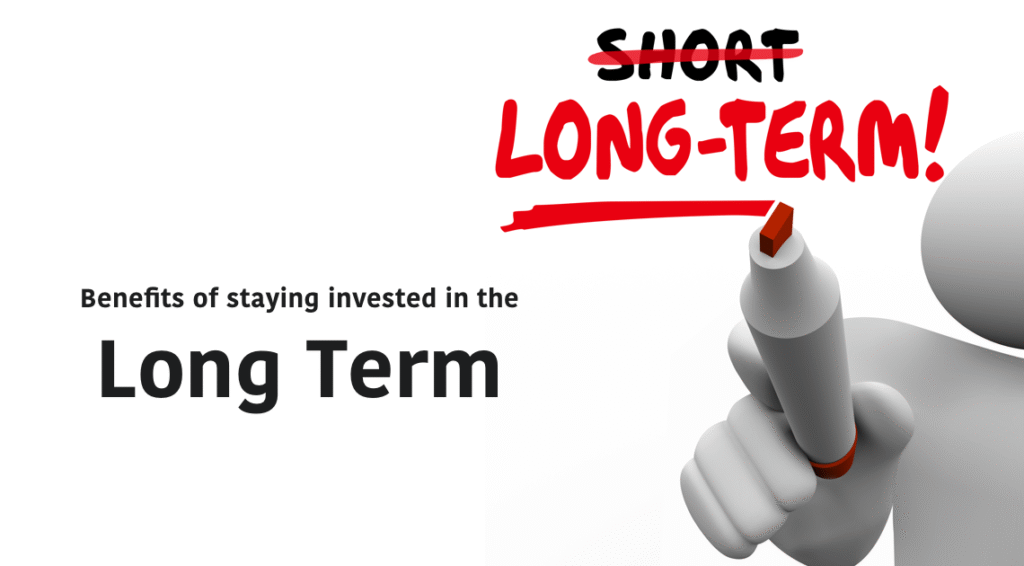
Why Holding Stocks Long-Term Is a Smart Strategy

Building wealth through the stock market is often about making strategic decisions and having the patience to let your investments grow over time. While short-term trading can seem appealing, the long-term investment strategy has consistently proven to be one of the most effective ways to build significant wealth. Staying the course and holding stocks for the long term allows you to harness the power of compound growth, minimize trading costs, and ride out market volatility. Historically, the stock market has provided robust returns, and this strategy tends to beat more speculative, short-term approaches.
By focusing on long-term growth, investors can benefit from the market’s overall upward trajectory, regardless of short-term market fluctuations. Here’s why this strategy can be one of the smartest financial moves you can make.
Key Takeaways:
- Long-Term Stock Investing typically outperforms short-term trading strategies, especially when compounded over decades.
- Emotional trading, driven by fear or greed, can harm your overall investment returns by causing ill-timed decisions.
- The S&P 500 has shown consistent growth over most 20-year periods, delivering positive returns even during economic downturns.
- Long-Term Investing allows you to take advantage of lower trading costs and the growth of dividends, amplifying returns.
- Weathering market volatility—staying invested through both the highs and lows—is one of the most important traits of successful investors.
Why Long-Term Stock Investments Work

Better Long-Term Returns: Compounding Growth
When compared to other asset classes such as bonds, real estate, or gold, stocks have historically provided the highest returns. While other investments can be beneficial, they often don’t offer the same level of growth potential as equities. For instance, the S&P 500—a benchmark index that tracks the performance of the 500 largest publicly traded companies in the U.S.—has delivered an average annual return of 9.80% from 1928 to 2023. To put that into perspective:
- Three-month Treasury bills, a traditional low-risk asset, returned around 3.30% annually during the same period.
- Gold, often seen as a store of value, delivered an average return of 6.55% annually.
The difference in these returns highlights the potential of stocks to generate wealth over the long run.
Smaller Companies and Emerging Markets
While large-cap stocks like those in the S&P 500 tend to be stable and provide solid long-term returns, there are other markets with higher growth potential. For example, small-cap stocks (companies with smaller market capitalizations) and emerging markets can offer higher returns, but they come with additional risks.
Consider the performance of the Russell 2000, which tracks smaller companies: over the past decade, it has delivered an average return of 8.39%. In comparison, the Russell 1000—tracking larger companies—produced an average return of 13.15% over the same period. While the smaller companies had slightly lower returns, they can still be an important part of a diversified portfolio, especially for those with a longer investment horizon.
Riding Out the Highs and Lows: The Power of Patience

One of the main reasons stocks are considered long-term investments is that short-term price fluctuations can be dramatic. Stock prices can swing wildly, with changes of 10% or more happening in a matter of days or weeks. This volatility is particularly evident during market corrections, recessions, or when economic data surprises investors.
The Importance of Holding Through Market Downturns
During periods of market turbulence, it’s natural to feel uneasy. However, the historical data shows that those who held onto their investments during downturns have been rewarded over the long term.
For example, during major historical events such as the Great Depression, Black Monday (1987), and the 2008 financial crisis, investors who remained committed to their investments typically saw their portfolios recover and grow over time. This illustrates that timing the market—trying to sell at the peak and buy at the trough—can be incredibly challenging and often leads to missing out on gains during market recoveries.
Historical Resilience of the S&P 500
Looking at the long-term performance of the S&P 500, investors who stayed invested for 20 years have rarely experienced a loss. Even during periods of extreme volatility, such as market crashes or recessions, long-term holders of diversified stock portfolios have typically come out ahead.
A key component of this resilience is the compounding effect of reinvested dividends. Over time, dividends reinvested into more shares of stock have allowed the initial investment to grow exponentially, leading to significant wealth accumulation.
The Hidden Costs of Short-Term Trading

While it can be tempting to trade frequently to capture quick gains, short-term trading can be costly and counterproductive, especially for long-term wealth-building.
Transaction Costs
Each time you buy or sell a stock, you incur transaction costs, such as broker fees and taxes on capital gains. These costs can add up quickly if you’re making frequent trades, eating into your potential returns. In contrast, long-term investing requires far fewer transactions, which means you pay lower trading fees and taxes, helping preserve your returns over time.
The Impact of Emotional Trading
Many short-term traders are influenced by emotions—fear of missing out (FOMO), fear of losses, or the excitement of short-term gains. This emotional approach to investing often leads to poor decision-making, such as selling during a market dip or buying during a speculative rally. Long-term investors, on the other hand, focus on fundamentals and the growth potential of companies rather than reacting to daily market fluctuations.
The Benefits of Dividends in Long-Term Investing

One of the major advantages of long-term investing is the ability to reinvest dividends. Dividends are a portion of a company’s profits distributed to shareholders, typically on a quarterly basis. Over time, the reinvestment of dividends can have a compounding effect on your total returns.
For example, a stock that pays a 2% dividend yield annually might seem modest at first. However, if you reinvest those dividends back into the stock, over several years, those dividends begin to generate their own returns, leading to exponential growth. Dividend reinvestment can significantly boost long-term returns without requiring additional capital investment.
Conclusion: Long-Term Stock Investing is a Winning Strategy
While short-term trading might offer quick rewards for some, long-term stock investing remains the most reliable path to wealth accumulation for most investors. By holding onto high-quality stocks through the inevitable market ups and downs, you can take advantage of compounding returns, lower trading costs, and dividend growth.
The S&P 500 and other stock indices have proven that, over the long haul, they consistently offer higher returns than most other asset classes. By staying disciplined, avoiding emotional trading, and focusing on the long-term, you can build a diversified portfolio that benefits from the power of the market’s upward momentum.
In conclusion, patience and persistence are key when it comes to investing in stocks. Stick with your investment plan, and you’ll likely see substantial rewards in the future.